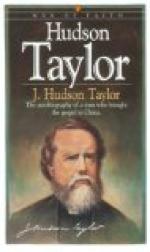Oliver Wendell Holmes.
* * *
Tourists and others will be amply repaid in visiting the new Capitol building, at the head of State Street. It is open from nine in the morning until six in the evening. It is said to be larger than the Capitol at Washington, and cost more than any other structure on the American continent. The staircases, the wide corridors, the Senate chamber, the Assembly chamber, and the Court of Appeals room, attest the wealth and greatness of the Empire State. The visitor up State Street will note the beautiful and commanding spire of “St. Paul.” The Cathedral is also a grand structure. The population of Albany is now 100,000, and its growth is due to three causes: First, the Capitol was removed from New York to Albany in 1798. Then followed two great enterprises, ridiculed at the time by every one as the Fulton Folly and Clinton’s Ditch—in other words, steam navigation, 1807, and the Erie Canal, 1825. Its name was given in honor of the Duke of Albany, although it is still claimed by some of the oldest inhabitants that, in the golden age of those far-off times, when the good old burghers used to ask the welfare of their neighbors, the answer was “All bonnie,” and hence the name of the hill-crowned city.
* * *
Canals, long winding, ope a watery flight,
And distant streams and seas and lakes
unite;
From fair Albania toward the fading sun,
Back through the midland lengthening channels
run.
Joel Barlow.
* * *
To condense from H. P. Phelps’s careful handbook of “Albany and the Capitol:” in 1614 a stockaded trading-house was erected on an island below the city, well defended for trading with the Indians. In 1617 another was built on the hill, near Norman’s Kill. The West Indian Company erected a fort in 1623 near the present landing of the Day Line. In 1664 the province fell into the hands of the English and the name was changed to Albany. In 1686 it was incorporated into a city. It was the meeting place of the Constitutional Congress 1754, the proposed Constitution of which, however, was never ratified. Washington visited it in 1783. The Erie Canal was opened in 1825, a railroad to Schenectady in 1832, the Hudson River in 1851, a consolidated road to Buffalo in 1853, and the Susquehanna Railroad to Binghamton in 1869. State Street at one time was said to be the widest city thoroughfare in the country, after Pennsylvania Avenue in Washington. The English and Dutch Churches and other public buildings, once in the midst of it, but long since removed, account for its extra width. The State Capitol has a commanding site. The old Capitol building was completed in 1808. The corner-stone of the present building was laid June 24, 1871, and it has been occupied since January 7, 1879. According to Phelps, “the size of the structure impresses the beholder at once. It is 300 feet north and south by 400 feet east and west, and with the porticoes will cover three acres and seven square feet. The walls are 108 feet high from the water-table, and all this worked out of solid granite brought, most of it, from Hallowell, Me.”




